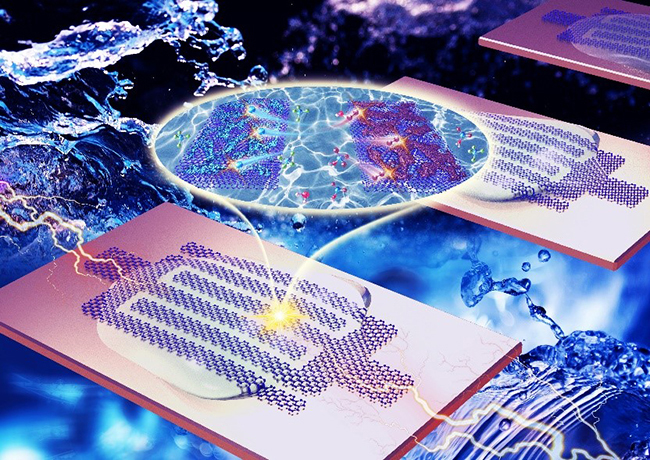Graphene-based micro-supercapacitors (EG-MSCs) can fully combine the distinct properties of graphene and the advantages of planar device configuration to maximize charge storage, thereby providing more flexible, smaller, and thinner devices.
However, the limited electric double layer capacity of graphene and the narrow voltage window of aqueous electrolytes limit its further application.
Recently, a team led by Prof. WU Zhongshuai collaborated with Prof. FU Qiang's team from the Dalian Institute of Chemical Physics (DICP) of the Chinese Academy of Sciences (CAS) proposed a versatile strategy for boosting the capacitance of graphene-based planar MSCs by highly concentrated water-in-salt ambipolar redox electrolyte (ZnI2 + ZnCl2).
This study was published in ACS Energy Letters on April 19.
Utilizing redox-active electrolytes for boosting graphene electrodes is a high-efficiency strategy to increase the capacitive performance of MSCs.
However, previously reported redox mediators could only offer a certain capacitance for a single electrode. The asymmetric behavior of the device could be aggravated by the enhanced capacitance of a single electrode, generally leading to limited energy density owing to the unmatched capacitances of two electrodes.
In this study, the researchers developed a novel highly concentrated water-in-salt ambipolar redox electrolyte where one ambipolar mediator (ZnI2) could offer two redox couples (I-/I2 and Zn/Zn2+) natively, with matched charge storage. Further, these two species allowed two electrons to be oxidized at the positive electrode and to be reduced at the negative electrode synchronously and individually, thus offering a large pseudocapacitive contribution for EG-MSCs.
They have realized the high volumetric capacity of 106 mAh/cm3, the unprecedented energy density of 111 mWh/cm3, and the long-term cycling stability with 92.1% retention after 5300 cycles.
In situ characterizations confirmed that these good performance were attributed to the frustrated self-discharge by suppressing the formation and diffusion of polyiodide ions of I3- and I5-.
Moreover, EG-MSCs showed stable cycling performance at -20 oC owing to the reduced freezing point of water by strong interactions between water molecules and zinc ions.
"This work opens a new avenue of introducing ambipolar redox mediators into highly concentrated electrolytes for high-performance MSCs," said Prof. WU.
This work was supported by the National Natural Science Foundation of China, the Dalian National Laboratory for Clean Energy of CAS, and the Joint Fund of the Yulin University and the Dalian National Laboratory for Clean Energy. (Text by MENG Caixia and ZHOU Feng)
